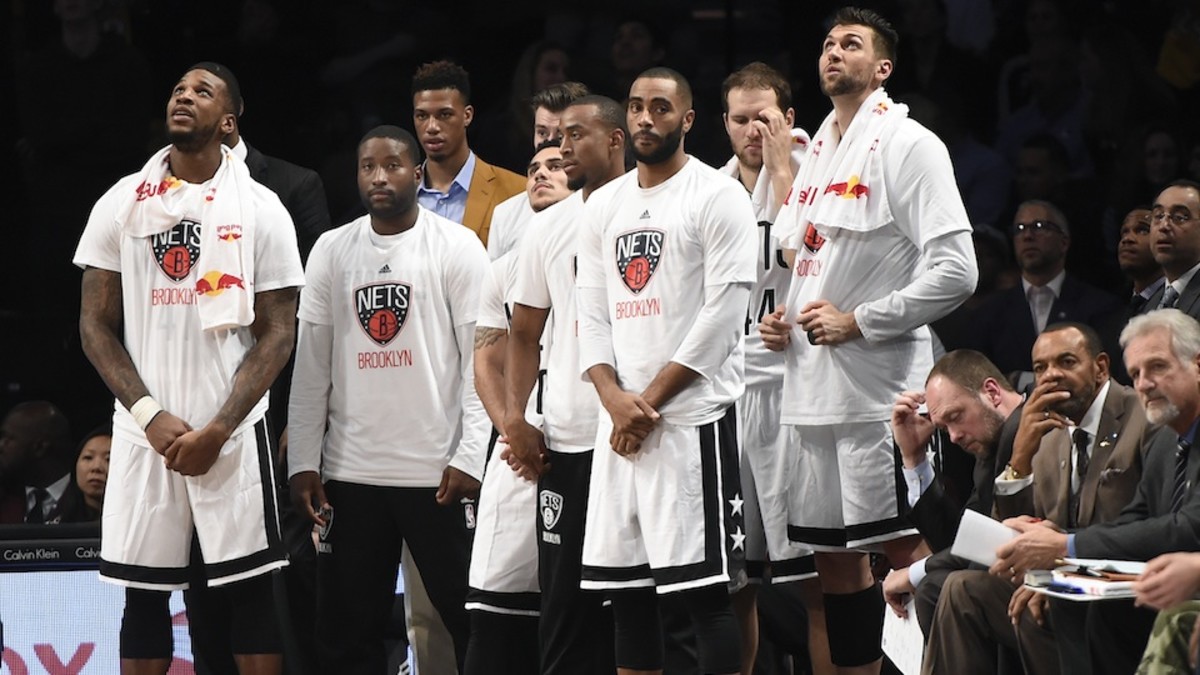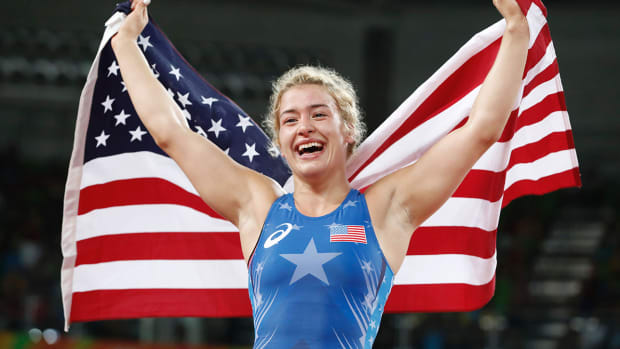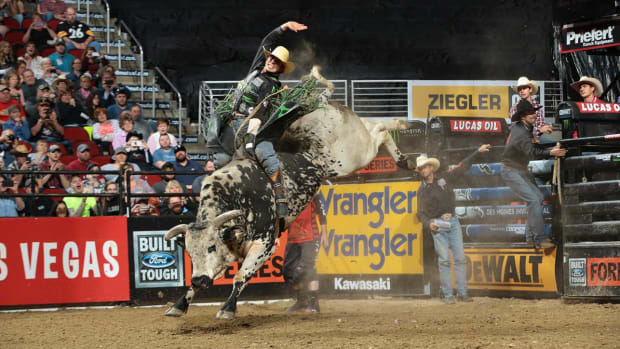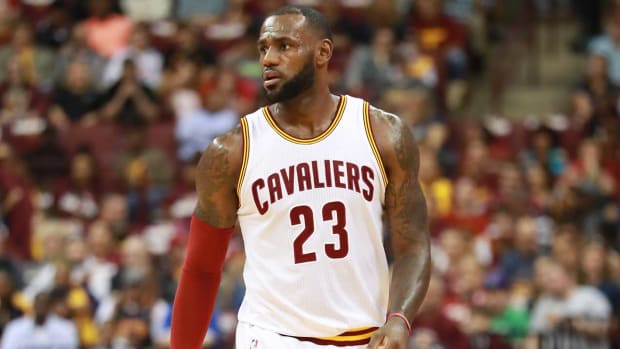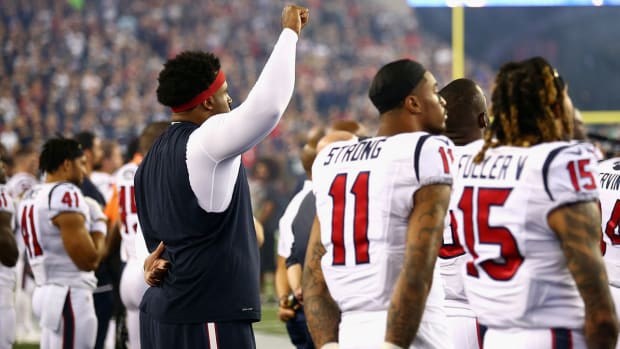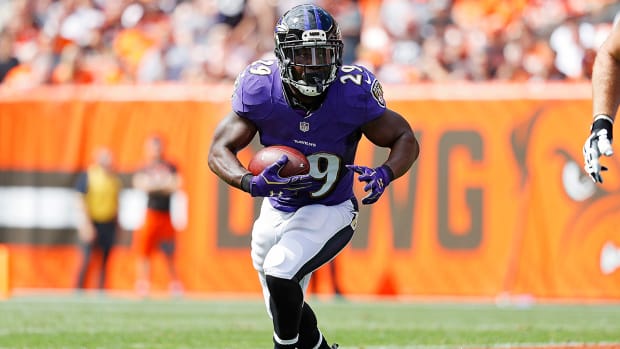The great Brooklyn tire fire: How the Nets dug their own basketball grave
The Brooklyn Nets are a five-alarm dumpster-fire, even after they shocked Houston on the road Wednesday night for their first victory of the season
Prior to stunning the Rockets, the Nets had been outscored by an average of 12.4 points and had led in the fourth quarter for exactly 19 seconds the entire season. A team with that point differential projects to win just six games and, small-sample-size caveats aside, Basketball-Reference’s SRS — which includes point differential and strength of schedule —slotted the then 0-7 Nets as the worst team in NBA history. (After beating the Rockets, they're now third-worst.)
So yes, we’re only eight games into a long, long season, and Joe Johnson's double-digit assist night is a small beacon of hope for a team that lacks creators. But Brooklyn’s path to legitimate improvement is so hard to see it might as well be buried under volcanic debris. Sure, there will be some inevitable upward progression to the mean—like, Wednesday night, for example—but not nearly enough to mask the stench of doom and decay hanging over this team.
Worse still, it’s a grave these Nets have dug for themselves.
This past off-season, Brooklyn ranked dead last in ESPN’s Future Power Rankings. The sole silver linings: future cap space (which, thanks to a rising salary cap, stands to be in abundance for everyone), and the fact the team plays in what’s still considered an “attractive market.” The Nets are strong candidates to finish with the worst record in the league but — in a truly crippling twist — would convey what could be the No. 1 overall pick to the Boston Celtics. Their second-round pick is headed to the Los Angeles Clippers.
Next year, the Celtics have the option of swapping picks with Brooklyn, meaning bottoming out would, for the second year in a row, pay exactly zero immediate dividends. Meanwhile, next year’s second-round pick is headed to the Atlanta Hawks. Then, in 2018, the Nets could once again be without a draft pick, with their first-rounder going to — you guessed it — the Boston Celtics.
All this Boston draft-pick tomfoolery can be traced back to a single deal when, back in the summer of 2013, the Nets sent Gerald Wallace, Kris Humphries, MarShon Brooks, Kris Joseph, Keith Bogans, three future first-round picks, and rights to a 2017 swap, in exchange for Kevin Garnett, Paul Pierce, Jason Terry and D.J. White. The move was a classic case of going all in on the present by sacrificing the future. From an optimist’s perspective, Mikhail Prokhorov and Billy King were merely putting the finishing touches — defense and experience, in cliche-speak — on a championship roster already teeming with offensive firepower in Brook Lopez, Deron Williams and Joe Johnson.
I guess the glass was half-empty.
In hindsight, it’s easy to blame the Boston trade on a nothing more than a stunning strategic miscalculation. Still, it’s hard to deny that Brooklyn’s putrid present has all but erased the memories of what once seemed a much rosier outlook. From The Brooklyn Game’s Devin Kharpertian:
Remember, Deron Williams was coming off his best three months in Brooklyn. He’d been arguably a top-10 player following the All-Star Break. Brooklyn’s biggest problems at that point were defense, spacing, and executing a gameplan for 48 minutes; they replaced Reggie Evans and Gerald Wallace with Kevin Garnett and Paul Pierce. ESPN’s early projections had them winning 64 games once they’d added Andrei Kirilenko to the mix.
The idea was that they’d compete for a championship for one to two years, and even if they didn’t win one, they’d still have had two strong, competitive seasons to entice free agents. There was no reasonable argument that it would get this bad, because what’s happened to the Nets defies reason.
“Defies reason” might be putting it a bit strong, why with the resulting group’s advanced age and injury risk rendering championship aspirations a somewhat delicate proposition. Ultimately, those chickens came home to roost, as a team beset by ailments never really played the part of a championship contender.
Today, Garnett and Pierce are long gone, with Williams — once the hoped-for franchise cornerstone — having fled to Dallas this past off-season. In just two short years, a roster replete with talented veterans has become a desolate wasteland of cast-offs and reclamation projects.
Still, Kharpertian’s greater point isn’t without merit. The Garnett-Pierce deal was, like just about any trade, a calculated risk — a fork in the road that seems smooth enough, until you wind up flipped over in a drainage ditch, desperately trying to get out before the whole thing explodes.
A roster built around Joe Johnson, Brook Lopez and Thad Young has virtually no chance of being competitive. In terms of youth development, Brooklyn currently has seven players aged 26 or younger, and none of them — per FiveThirtyEight’s CARMELO projection — project to be anything more than replacement-level contributors. The Nets have just one first-round pick in the next three drafts (2017), and even that asset’s value depends solely on how Boston’s so-far-promising rebuild continues to unfold. Barring an unforeseen trade, there is no avenue that will allow Brooklyn to add the upside-laden youth it so desperately needs.
Mercifully, there is some good news: The Nets should have a bit of cap space once Johnson’s ridiculous salary finally comes off the books next summer (ditto Jarrett Jack’s $6 million, non-guaranteed salary). As such, there should be room for Brooklyn to chase a few big free-agent fish. The question is how the franchise’s selling points (Living in Brooklyn is awesome!) square with the team’s actual potential (Nonexistent!). If anything, shelling out for free agents provides significantly less value than rookie-scale contracts, meaning the Nets will almost invariably be getting less for their money than those now long-gone draft picks would’ve yielded.
A quick look at the bottom of the NBA standings offers glimpses of both despair and hope. So while the L.A. Lakers are forced to struggle through Kobe Bryant’s kamikaze farewell and Byron Scott’s byzantine player-development strategies, they still have Jordan Clarkson, Julius Randle and D’Angelo Russell — a trio of promising talents. Whatever questions and concerns the Philadelphia 76ers might have about Joel Embiid’s foot and Sam Hinkie’s process, they still have Nerlens Noel, Jahlil Okafor and the impending arrival of Dario Saric. The New Orleans Pelicans and Sacramento Kings have combined for two wins, but they each boast one of the most talented young big men in the league.
The Nets? They’re just bad, full stop, and liable to stay that way for quite some time. They’ve mismanaged their affairs so woefully, their losing actually stands to benefit a division rival. And while they set their cap-space sights on the likes of Kevin Durant, odds are high Brooklyn will end up doing what it has done in the past: take the easiest-looking road in the fork, and overpay for overrated talent.
“Luck,” the great philosopher Seneca once said, “is what happens when preparation meets opportunity.” But when you’re as bad at the former as these Nets have been, don’t expect the latter to come knocking anytime soon.
